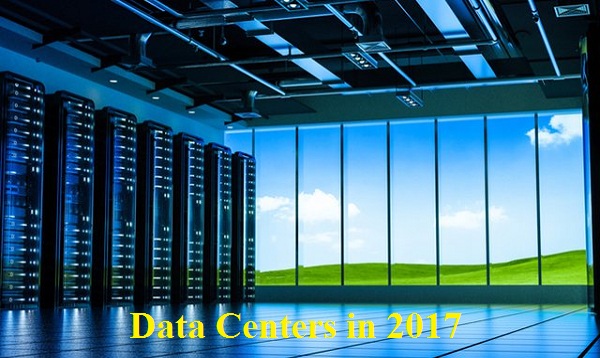There are many factors that are pushing data centers to perform optimally including greater flexibility and scalability with higher cost efficiency in terms of data center building and operation costs. In fact, the modern data centers are expected to provide features of public cloud solutions such as AWS.
Availability of wide spectrum of technology fronts has further complicated alignment of cloud strategies and on-site infrastructures such as data center facilities in order to design the most gratifying way for establishing data environment that can cater to needs of next generation users.
Data centers are bound to be transformed into entirely new entities in terms of functions as well as form by incorporating broad array of cutting edge technologies that used to be part of sci-fi movies just about a few years ago. As far as 2017 is concerned, we can anticipate the following trends to influence data center operations.
Emergence of HCI and SDCC
There is no doubt that hardware will provide a fundamental support to data center infrastructure. Yet, it will not be essential to have a huge and sprawling facility to house the hardware resources.
There is an accelerated trend of transforming data centers into Hyper Converged Infrastructures (HCI). These modern IT platforms are governed by deployment and management of modular components to support storage, networking and compute.
Emergence of Hyper Converged Data Center shifts all operations that surround integration, provisioning, and management to software layer to gain amazing flexibility that is ideal for supporting significantly diverged and exclusive needs of applications.
In addition to this HDCC helps boost creation of end-to-end Software Defined Data Centers by enabling implementation of self defined operating environments. This will help extension of data center functionalities into broadly dispersed cloud areas with considerable economy.
Broader interoperability between clouds
Majority of enterprises are forced to deal with several workloads on different clouds which can only be compared with jugglery and can lead to issues of silo laden IT infrastructure that may disrupt performance and productivity of on-site data center facility. This can only be countered by development of interoperable ecosystem that allows wide coverage of geographical area by integrating functionalities of private, public, and hybrid clouds.
It is easier said than done, since it calls for a greater level of orchestration throughout the data stack and needs to span end-to-end infrastructure for covering a myriad of third party applications.
Modern data center facilities must be able to focus more on needs of end users rather than technology in order to achieve seamless coordination between technicians and business managers.
Expansive data edge
There has been a tremendous growth in data generation due to emergence of Internet of Things that will force data center edge to include a huge gamut of interconnected devices spewing out volumes of data that need to be incessantly monitored for security by folding into extremely dynamic data flows.
As the data environments spreads to encompass a broad spectrum of consumer goods including air conditioning systems, refrigerators, and washing machines, data centers will have to gear up for meeting new challenges of data management in addition to the existing issues of governance, security, and compliance.
This calls for an urgent shift to container oriented micro-services for dealing with host of minuscule yet vital functions for economy that is fast paced and service oriented. Shifting of micro data centers in proximity to users will facilitate precise and real time results.
Autonomous system
Although, modern organizations are used to automation technologies, system autonomy is going to prove as a real game changer. It is powered by sophisticated technologies including machine learning, artificial intelligence, and many more leading edge technologies.
System autonomy facilitates systems to get educated and then adapt to changing environments with negligible or no intervention.
The new phenomenon is not directed only at reconstruction of IT processes, but is targeted at redefining the entire gamut of enterprise resources and functions spanning through product development to customer gratification.
Needless to mention, implications for data workforce are not going to be palatable. System autonomy has potential to transform data infrastructures and the way these are operated for maximizing productivity.
Proper and correct implementation of system autonomy for autonomy for well qualified objectives will lead to greater cost efficiency and higher level of profitability. Organizations can set their eyes on new and emerging markets by developing advanced business models.
Conclusion
The common thread that runs through all such trends is the assurance of achieving more by doing less. This has been expected by front office from enterprise IT infrastructure for a long time.
Since the advent of mainframe computing, there has been a significant level of physical restriction which has stunted growth of the entire gamut of IT capabilities.
By establishing a smarter and highly agile infrastructure, enterprises will be posed to scale great heights of scalability to compete in the new era of digital economy.






 Live Chat
Live Chat